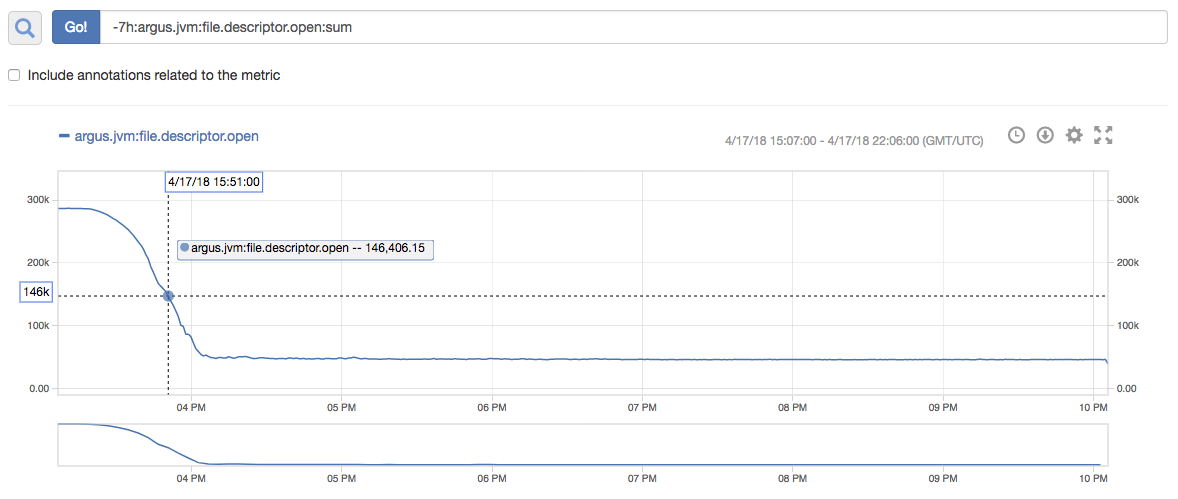salesforce / Argus
Programming Languages
Projects that are alternatives of or similar to Argus
Argus 


Argus is a time-series monitoring and alerting platform. It consists of discrete services to configure alerts, ingest and transform metrics & events, send notifications, create namespaces, and to both establish and enforce policies and quotas for usage.
Its architecture allows any and all of these services to be retargeted to new technology as it becomes available, with little to no impact on the users.
To find out more see the wiki and check out the release notes.
Building Argus
Installing The Resource Filters
Argus uses the argus-build.properties file as a resource filter for the build and all the module builds. After you clone the project for the first time, or after you change this file, you must create and install the dependency jars which will contain these filters. Those dependency jars are then pulled in by the modules, expanded and have their values applied to the module specific builds. Luckily, it's a straightforward operation. Just execute the following command from within the parent project, after you first clone the project or after you update the argus-build.properties file.
mvn -DskipTests=true -DskipDockerBuild --non-recursive install
Running The Unit Tests
Once the resource filters are installed, you can run unit tests. Running the unit tests doesn't require any changes to the argus-build.properties file. Just install the resource filters and execute the test goal.
mvn test
Only the unit tests are run by codecov.io and as such, the coverage reported by it is significantly less than the coverage obtained by running the full test suite.
Running The Integration Tests (Deprecated)
Currently the integration tests are non-functional but are being retained in case we want to resurrect them.
The integration tests for Argus use the LDAPAuthService implementation of the AuthService interface and the DefaultTSDBService implementation of the TSDBService interface (which targets OpenTSDB). Additionally it uses the RedisCacheService implementation of the CacheService interface to facilitate integration testing of the BatchService. In order to run the integration tests you must update the argus-build.properties file to correctly setup the external LDAP you'll be testing against and the OpenTSDB endpoints to use as well as the Redis cluster. The snippet below shows the specific properties that should be modified in the argus-build.properties file. Of course, after you make these updates, you must re-install the resource filter dependencies as described above and execute the clean goal, before running the integration tests.
# The LDAP endpoint to use
service.property.auth.ldap.endpoint=ldaps://ldaps.yourdomain.com:636
# A list of comma separated search paths used to query the DN of users attempting to authenticate.
# This example lists two separate search bases. One for users and one for service accounts.
service.property.auth.ldap.searchbase=OU=active,OU=user,DC=yourdomain,DC=com:OU=active,OU=robot,DC=yourdomain,DC=com
# This specifies of the DN for the privileged user that is used to bind and subsequently execute the search for user DN's
service.property.auth.ldap.searchdn=CN=argus_admin,OU=active,OU=user,DC=yourdomain,DC=com
# The password for the privileged user above.
service.property.auth.ldap.searchpwd=Argu5R0cks!
# The LDAP field with which the username provided during a login attempt, will be matched.
# This is used so Argus can obtain the DN for the user attempting to login, and subsequently attempt to bind as that user.
service.property.auth.ldap.usernamefield=sAMAccountName
# The TSDB read endpoint
service.property.tsdb.endpoint.read=http://readtsdb.yourdomain.com:4466
# The TSDB write endpoint
service.property.tsdb.endpoint.write=http://writetsdb.yourdomain.com:4477
# The Redis cache cluster information
service.property.cache.redis.cluster=redis0.mycompany.com:6379,redis1.mycompany.com:6389
Once the modifications have been made and the resource filters re-installed, you're ready to run the complete suite of tests, including the integration tests.
mvn verify
Generating Coverage Reports
Coverage is calculated everytime tests are run for all modules with the exception of ArgusWeb. In order to generate a coverage report for a module, just cd into the module subdirectory and run the report generation target.
mvn jacoco:report
Coverage reports are generated in the target/site/jacoco directory.
Deploying & Running Argus
Please see the wiki for information on how to deploy, configure and run Argus.

